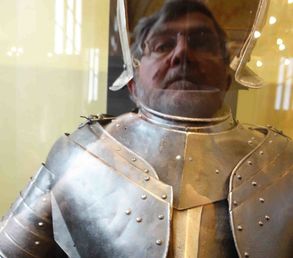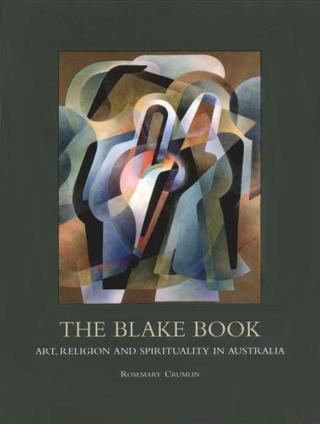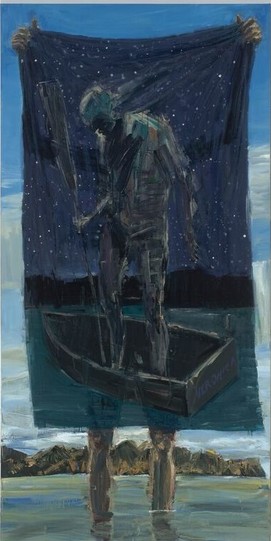Concerning the Spiritual in Australian Art The Blake Prize for Religious Art has been the focal point for religious and spiritual art in Australia since 1951 and a shudder spread through the Australian art community when rumours appeared in 2014 that a new chief sponsor could not be found and that the prize would implode concluding with the 2015 Blake Prize exhibition. As so often in the past, rumours of the demise of the Blake Prize have been greatly exaggerated and what actually happened, is that after the regular show in 2015, the 64th Blake Prize in 2016 moved to the Casula Powerhouse Arts Centre in Liverpool. It has now been rebadged as a biennial event and the non-acquisitive major prize has risen from $25,000 to $35,000, with the emerging artist’s prize also growing from $4,000 to $5,000. Casula has been announced as the new permanent home for the prize. The orientation of the 64th Blake Prize has remained largely unchanged and the stated intention on their website is that the Casula Powerhouse “will maintain the guiding principles of The Blake Prize in continuing to engage contemporary artists, both national and international, in conversations concerning faith, spirituality, religion, hope, humanity, social justice, belief and non-belief. The Blake Prize is an aesthetic means of exploring the wider experience of spirituality and all this may entail with the visionary imagining of contemporary artists … All the Blake Prize’s (sic) are strictly non-sectarian. The entries are not restricted to works related to any faith or any artistic style, but any work entered must have a recognisable religious or spiritual integrity.” The Casula administrators assure me that the next Blake Prize will take place in 2018, but the dates are yet to be confirmed and will be posted on their website. The history of the Blake Prize has been well documented by Rosemary Crumlin in her book, The Blake Book: Art, Religion and Spirituality in Australia, and the checklist of winners of the Blake, with a few recent exceptions, reads like a who’s who of Australia post-WWII art, including, Justin O’Brien, Stanislaus Rapotec, Leonard French, Asher Bilu, Gillian Mann, Hilarie Mais, Roger Kemp, John Coburn, George Gittoes, Euan Macleod and Leonard Brown. However, one should note that women artist winners in the Blake are an endangered species and there is a very limited Indigenous voice. It would also be difficult to argue that the Blake Prize has seized the national imagination and in fact the struggle for sponsorship and a proper venue has been a perennial struggle as long as I have known the prize. Many artists are eager for exposure and recognition, especially in these difficult economic circumstances, exacerbated by Senator Brandis’ gutting of the Australia Council, a move that is now being repaired with the abolition of the silly Catalyst federal government slush fund. But the damage has been done and cannot be easily undone. Nevertheless, artists are frequently reluctant to enter something with the word “religion” in the title. What is in a name? Earlier in March 2017 in Canberra the Stations of the Cross exhibition was held in the chapel at the Australian Centre for Christianity and Culture. It is an exhibition of sixteen artists responding to the various imagined moments in Christ’s life on his final day as he walked along the Via Dolorosa in Jerusalem up to Mount Calvary. Stations of the Cross is an invitational show where the strong band of artists included the standout performers Euan Macleod, John Pratt, Ella Whateley, Julie Dowling and Reg Mombassa. Although thematically anchored in Christian theology of a particularly Western European persuasion, the exhibition is not restricted dogmatically to a limited circle of true believers. The Australian Centre for Christianity and Culture has in recent years invested in professional lighting to make its exhibition space more professional (although there is still some way to go). There is a desire to somehow advance this centre as a national centre for religious art in Australia, but again there exists the stumbling block of nomenclature.
The term “religious art” may appear restrictive – institutional religions do not include many variants and subtleties. To call it a national centre for “spiritual art” may seem to open the door to a stampede of hobby horses, space cadets and new ageist sects. One would like to include all artists who are interested in giving expression to the religious and the spiritual – Christian, Buddhist, Islamic, and Aboriginal and Torres Strait Islanders and their cosmographies. One suggestion is “theistic art” – this would of course cover not only monotheism, but also polytheism and deism – and it would leave out atheists and agnostics. Perhaps a simpler solution would be to call it a national centre of sacred art? There is power in words and one purpose of this blog is to start a discussion, so all feedback is greatly appreciated. Almost like a product disclosure statement, I should confess that I was one of the judges for the Blake Prize in 2010 and did open the Stations of the Cross exhibition in March 2017 in Canberra, which would suggest that I am committed to, or at least interested in, the general area of spirituality in art. Also as feedback from me, since this Grishin’s Art Blog series got off the ground in November 2016, the website receives over 10,000 reads each week, something that was completely beyond my expectations. Thank you.
7 Comments
Ruth Gold
23/3/2017 22:53:16
Tricky if theism or deism omits agnostics and atheists and does their lack of belief equate to yet another form of belief in terms of a spiritual art prize? Do spiritual parameters fully cater to the multi-cultural landscapes we have here in Australia? So many difficult questions.
Reply
sasha grishin
23/3/2017 23:05:17
Ruth I agree, although if there are no restrictions, then it can simply be another 'no boundaries' art exhibition. 'Theism' and 'Sacred' provide a focus
Reply
Ruth Gold
23/3/2017 23:36:34
True Sasha, I suppose I am questioning whether you can you be an artist, make artwork and ultimately have no belief installed in the work itself? I'm not challenging a notion of spiritualism for an art prize just curious if a work can be created that doesn't refer to some form of belief system? For me, nature is a spiritual belief.
Reply
Kerry anne
24/3/2017 21:21:30
I realy have searched and yet am still to be convinced that there are any true atheists...particularly in the art world. The very act of creating an image/object/idea etc.... itself contradicts the statement and belief of no creation (to me)
Reply
sasha grishin
24/3/2017 22:55:26
That's a great quote, my favourite remains from the Little Prince “On ne voit bien qu'avec le cœur. L'essentiel est invisible pour les yeux” ("One sees clearly only with the heart. What is essential is invisible to the eye". Not all art has a theistic dimension - I suppose that is what we are aiming for - perhaps I am completely wrong.
Reply
Mark
25/3/2017 10:44:39
There are people who live their lives according to a system of religious beliefs and there are those who choose not to. Each has reasons for this choice. I am too pragmatic to construct any kind of belief system or to exclude those who do not share it. However, art may be seen as a question-asking activity. Nobody needs to be excluded from asking questions.
Reply
26/3/2017 18:39:57
I recently heard the expression: "the eyes of faith". The idea being that having faith allows you to see what is beyond mere human vision. In this way, a transcendent experience of knowing is possible. Perhaps 'faith' is a key word for the Centre's future art exhibition.
Reply
Your comment will be posted after it is approved.
Leave a Reply. |
GRISHIN'S ART BLOG
Sasha Grishin AM, FAHA is the author of more than 25 books on art, including Australian Art: A History, and has served as the art critic for The Canberra Times for forty years. He is an Emeritus Professor at the Australian National University, Canberra; Guest Curator at the National Gallery of Victoria, Melbourne; and Honorary Principal Fellow, Faculty of Arts, at the University of Melbourne. Archives
June 2024
Categories
Keep up-to-date with Sasha Grishin's blog with the RSS feed.
RSS offers ease of access and ensures your privacy, as you do not need to subscribe with an email address. Click here to download a free feed reader |




 RSS Feed
RSS Feed